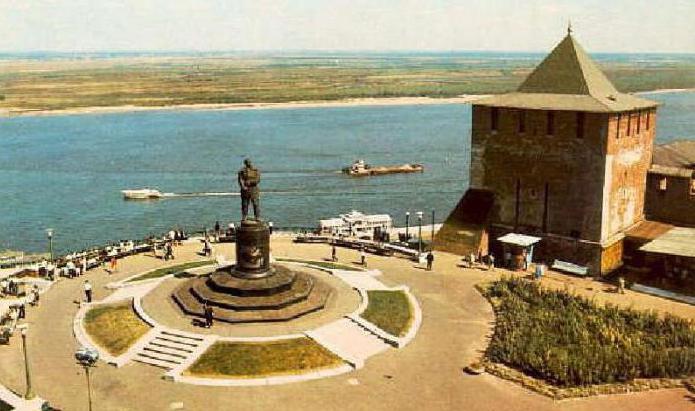In the period from 1714 to 1719, according to the decree of Peter I, a regional reform was carried out, in the framework of which new individual subjects were singled out. On the basis of this decree, the Nizhny Novgorod province was withdrawn from Kazan and made an independent unit with a center in Nizhny Novgorod.
Stages of formation
The administrative division in 1708 led to the accession of Nizhny Novgorod to the Kazan province. Six years later, its northwestern part was separated into a separate independent Nizhny Novgorod province. Only three years after its formation, it was again annexed to Kazan. It received its final independence on May 29, 1719 by decree of Peter I. During the period from the seventeenth to the eighteenth centuries, various crafts actively developed here. The effective plowing of new lands, the establishment of a social division of labor, the development of commodity-money economy brought the province to a new level.
Local crafts
Most residents were involved in the production of potash. This chemical was then used in soap making, the manufacture of glass and paint, and also in the manufacture of gunpowder. Arzamas County was the center of its production. The villages of the Nizhny Novgorod province were also famous for their skillful blacksmiths and carpenters. The inhabitants of Balakhna mainly worked on shipbuilding and were engaged in salt mining. The villages of the Nizhny Novgorod province included several villages. So, for example, nine villages entered Bogorodskoye at once, each of which was famous for its noble tanners. Also in the region, industry was actively developing. At the beginning of the eighteenth century, a large anchor plant was built on the territory of the Gorodets volost. In the middle of this century, the iron and cast-iron plants of Demidov began their work. The main industrial center was Nizhny Novgorod. They were engaged in cable production, shipbuilding, metalworking, leather dressing, brewing, the production of malt, brick and steel, and many others. The province was also famous for good merchants who delivered to various cities and even reached Siberia.
Composition of counties before the 1917 revolution
In 1779, the government decided to create the Nizhny Novgorod governorate, which will include thirteen counties. In 1796, governorship ceased to exist, so the Nizhny Novgorod province was formed. Such a change led to the abolition of Knyagininsky, Makaryevsky, Sergachsky, Pochinkovsky and Pyanskoperevozky counties. Eight years later, the first three fell under restoration. As a result, at the time of the revolution of 1917, the Nizhny Novgorod province consisted of eleven counties. The largest of them was the Nizhny Novgorod district with a population of 90,053 people. Arzamas and Balakhna districts were also among the top three with 10 592 and 5 120 people, respectively. Next came the Gorbatovsky, Sergachsky, Vasilsursky, Semenovsky and Ardatovsky districts. The smallest were Knyagininsky, Lukoyanovsky and Makaryevsky districts.
The post-revolutionary life of Nizhny Novgorod
After the 1917 revolution , Nizhny Novgorod province was enriched with new counties. Counties were not only added, but also partially renamed. 1918 is the date of renaming of Gorbatov County to Pavlovsky. At the same time, the Resurrection County was formed. Two years later, as a result of renaming Makaryevsky, Lyskovsky district appeared. The year 1921 entailed the formation of three more - Vyskunsky, Pochinkovsky and Sormovsky. Also this year, the Balakhna district began to be called Gorodetsky. A year later, the Nizhny Novgorod province took under its wing two counties and 6 Kostroma volosts, the almost complete Kurmysh district from Simbirsk province, as well as four volosts that belonged to Tambov before. Such large-scale territorial changes led to the creation of the Kanavinsky working area. The emergence of new counties contributed to the abolition of the old and their accession and unification with larger ones. So the history of Pochinkovsky, Kurmyshsky, Knyagininsky, Voskresensky, Vasilsur, Varnavinsky and Artdatovsky counties went down in history. Krasnobakovsky district appeared this year. In 1924, four volosts became part of the Mari Autonomous Region. The North Dvina province expanded by one volost, which left the structure of Nizhny Novgorod. With regard to the formation of new entities, they were Rastyapinsky and Balakhninsky working areas. Also in 1924, the Somovsky district was transformed into a working district. As a result of post-revolutionary changes, in 1926 the Nizhny Novgorod province included eleven counties and four districts.

Interesting fact
Nowhere in the Russian Empire was there a more developed handicraft industry than on the Nizhny Novgorod lands. In pre-revolutionary times there were a huge number of publications describing this activity. The most vivid and significant for history is considered the three-volume "Nizhny Novgorod Province for the Study of the Provincial Zemstvo." His second volume thoroughly describes all the subtleties of the cottage industry in this part of Russia. Attracts not only the contents of the book, but also its execution. Turning pages, the reader comes across a huge number of unique illustrations. They depict most of the crafts of handicraft production, from the initial burning of coal to the most complex creations of skillful blacksmiths.
Memo to a contemporary
Today, almost every contemporary is trying to collect the maximum amount of information about their origin. To find out if a person born in the current Nizhny Novgorod region belongs to the nobility, or if his ancestors were simple artisans, the genealogy book of the Nizhny Novgorod province helps. You can find out online through the “Unified Genealogy Center”, or contact the local archive. Family books describe employees of various structures. From here you can find out in which position the ancestor was: a doctor or a postman, a judge, or maybe a forester. The data on the site are presented in 1847, 1855, 1864 and 1891. You can also search for information about your origin in address books and calendars.